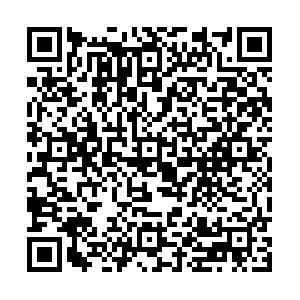|
[1] HOOFNAGLE JH, SERRANO J, KNOBEN JE, et al.Liver Tox:A website on drug-induced liver injury[J].Hepatology, 2013, 57 (3) :873-874.
|
|
[2]MAO YM.Hepa Tox:A professional network platform promoting the clinical and translational research on drug-induced liver injury in China[J].Chin Hepatol, 2014, 19 (8) :575-576. (in Chinese) 茅益民.Hepa Tox:促进中国药物性肝损伤临床和转化研究的专业网络平台[J].肝脏, 2014, 19 (8) :575-576.
|
|
[3]KAPLOWITZ N.Idiosyncratic drug hepatotoxicity[J].Nat Rev Drug Discov, 2005, 4:489-499.
|
|
[4] CHALASANI NP, HAYASHI PH, BONKOVSKY HL, et al.ACG clinical guideline:The diagnosis and management of idiosyncratic druginduced liver injury[J].Am J Gastroenterol, 2014, 109 (7) :950-966.
|
|
[5]Drug-Induced Liver Disease Study Group, Chinese Society of Hepatology, Chinese Medical Association.Guidelines for the management of drug-induced liver injury[J].J Clin Hepatol, 2015, 31 (11) :1752-1769. (in Chinese) 中华医学会肝病学分会药物性肝病学组.药物性肝损伤诊治指南[J].临床肝胆病杂志, 2015, 31 (11) :1752-1769.
|
|
[6]ROCHON J, PROTIVA P, SEEFF LB, et al.Reliability of the RUCAM for assessing causality in drug-induced liver injury[J].Hepatology, 2008, 48 (4) :1175-1183.
|
|
[7]HOOFNAGLE JH, SERRANO J, KNOBEN JE, et al.Liver Tox:A website on drug-induced liver injury[J].Hepatology, 2013, 57 (3) :873-874.
|
|
[8]LUCENA M, MOLOKHIA M, SHEN Y, et al.Susceptibility to amoxicillin-clavulanateinduced liver injury is influenced by multiple HLA class I and II alleles[J].Gastroenterology, 2011, 141 (1) :338-347.
|
|
[9]DALY AK, DONALDSON PT, BHATNAGAR P, et al.HLA-B*5701 genotype is a major determinant of drug-induced liver injury due to flucloxacillin[J].Nat Genet, 2009, 41 (7) :816-819.
|
|
[10]NICOLETTI P, AITHAL GP, BJORNSSON ES, et al.Association of liver injury from specific drugs, or groups of drugs, with polymorphisms in HLA and other genes in a genome-wide association study[J].Gastroenterology, 2017, 152 (5) :1078-1089.
|
|
[11]HAYASHI PH, ROCKEY DC, FONTANA RJ, et al.Death and liver transplantation within 2 years of onset of drug-induced liver injury[J].Hepatology, 2017, 66 (4) :1275-1285.
|
|
[12]FONTANA RJ, HAYASHI PH, GU J, et al.Idiosyncratic druginduced liver injury is associated with substantial morbidity and mortality within 6 months from onset[J].Gastroenterology, 2014, 147 (1) :96-108.
|
|
[13]CHALASANI N, BONKOVSKY HL, FONTANA R, et al.Features and outcomes of 899 patients with drug-induced liver injury:The DILIN prospective study[J].Gastroenterology, 2015, 148 (7) :1340-1352.
|
|
[14]STUTCHFIELD BM, ANTOINE DJ, MACKINNON AC, et al.CSF1 restores innate immunity after liver injury in mice and serum levels indicate outcomes of patients with acute liver failure[J].Gastroenterology, 2015, 149 (7) :1896-1909.
|
|
[15]CHEN M, BORLAK J, TONG W.A model to predict severity of drug-induced liver injury in humans[J].Hepatology, 2016, 64 (3) :931-940.
|
|
[16]BENESIC A, LEITL A, GERBES AL.Monocyte-derived hepatocyte-like cells for causality assessment of idiosyncratic drug-induced liver injury[J].Gut, 2016, 65 (9) :1555-1563.
|

 本文二维码
本文二维码


 PDF下载 ( 154 KB)
PDF下载 ( 154 KB)

 下载:
下载:

